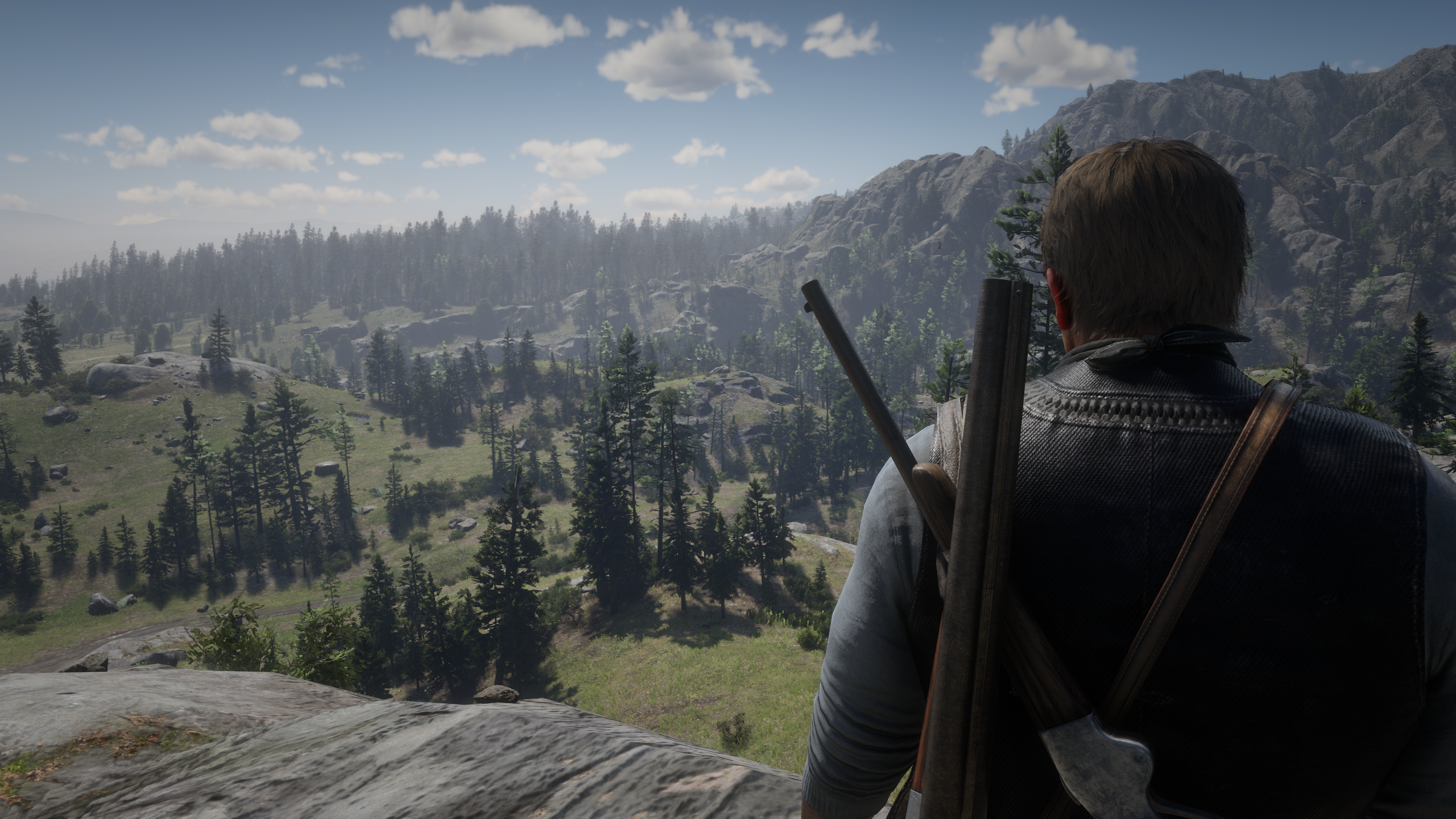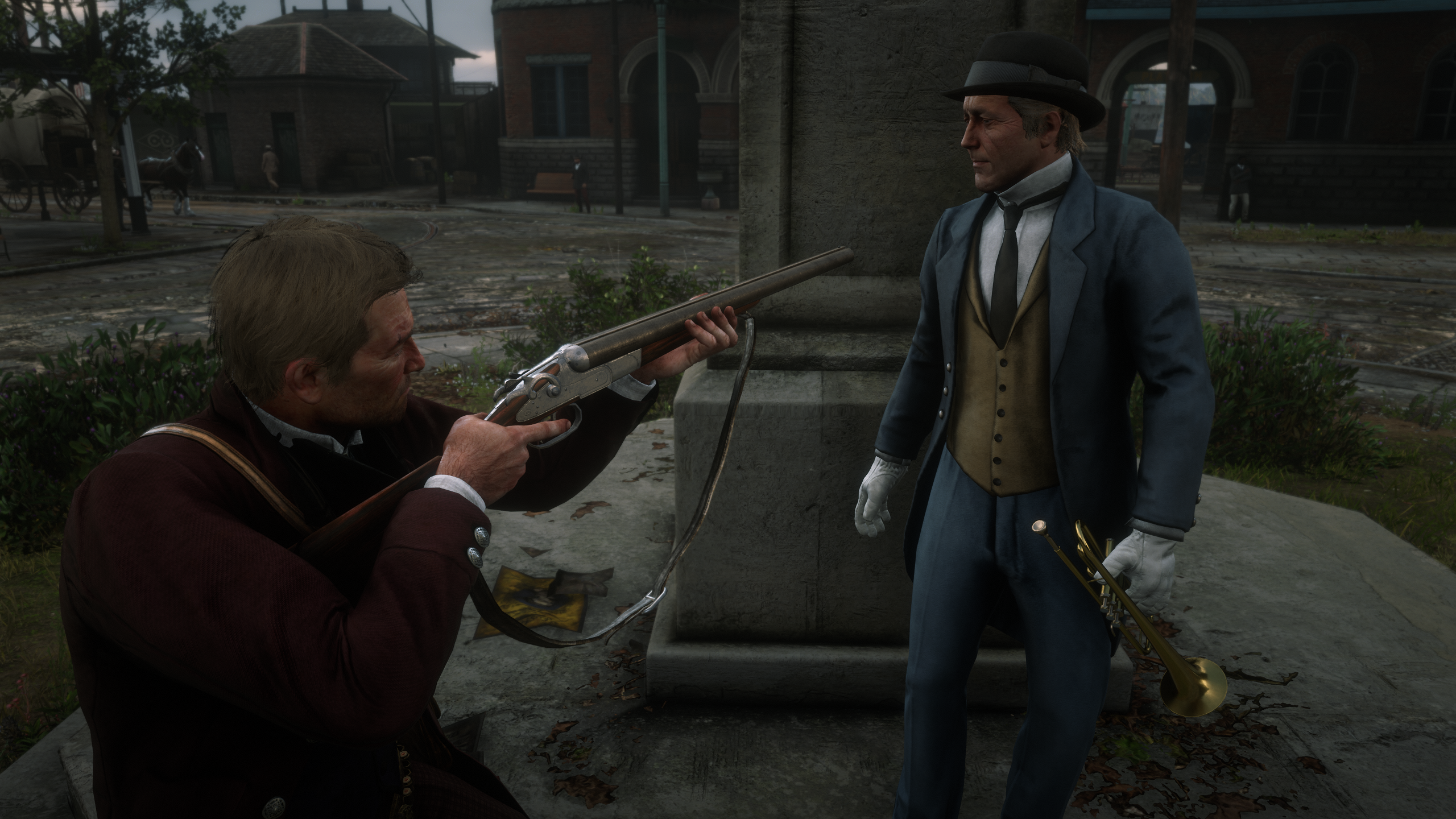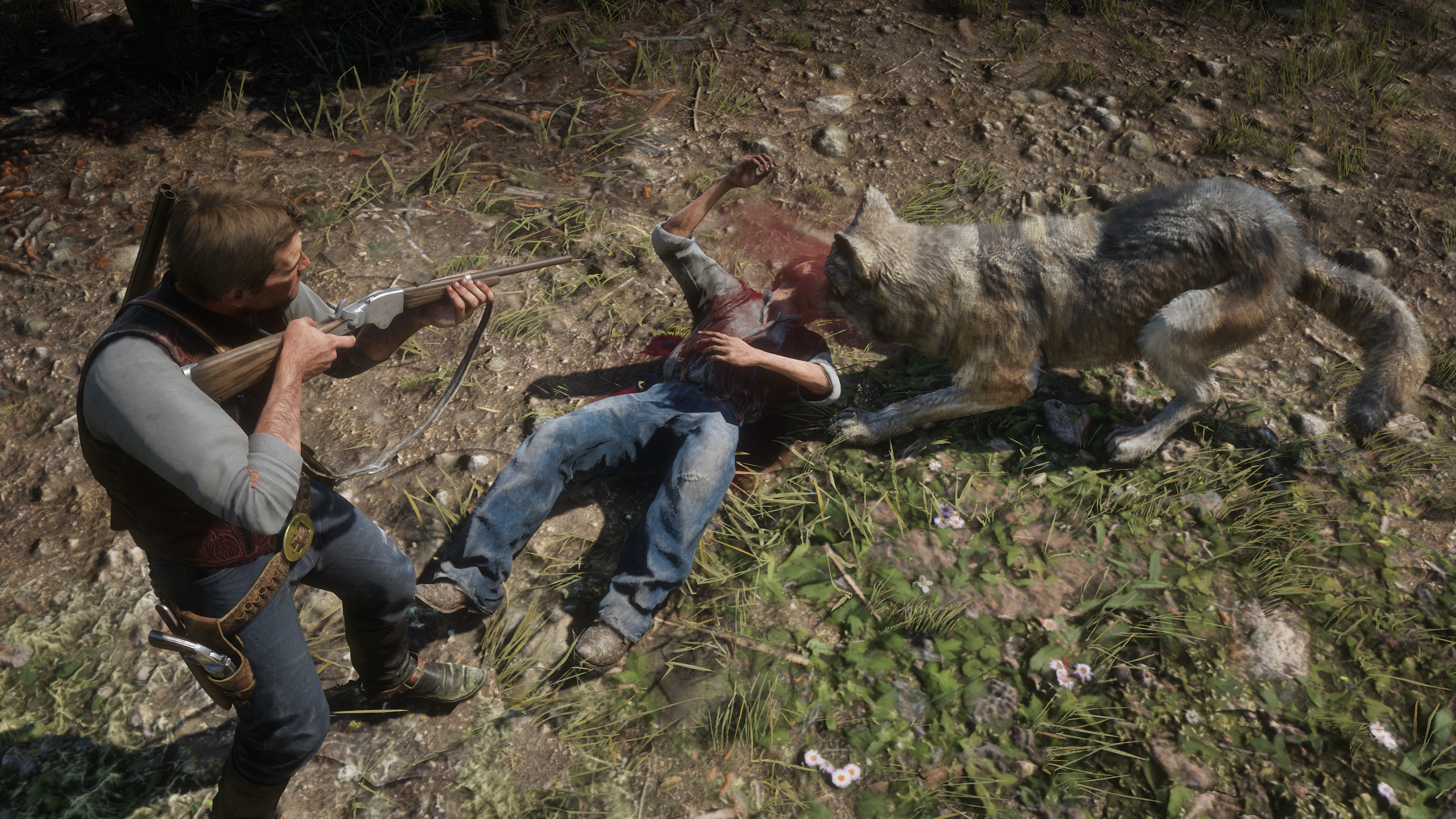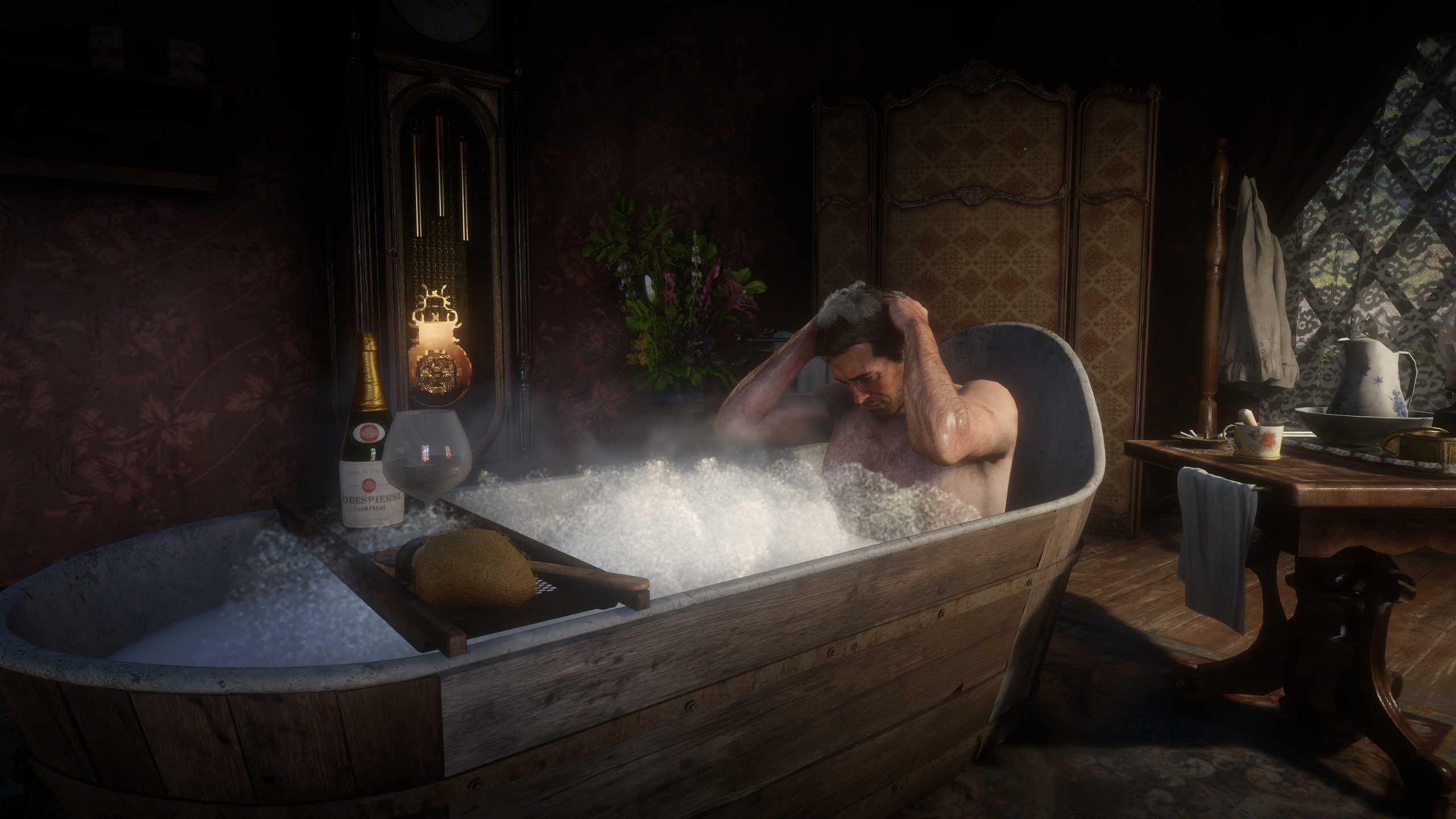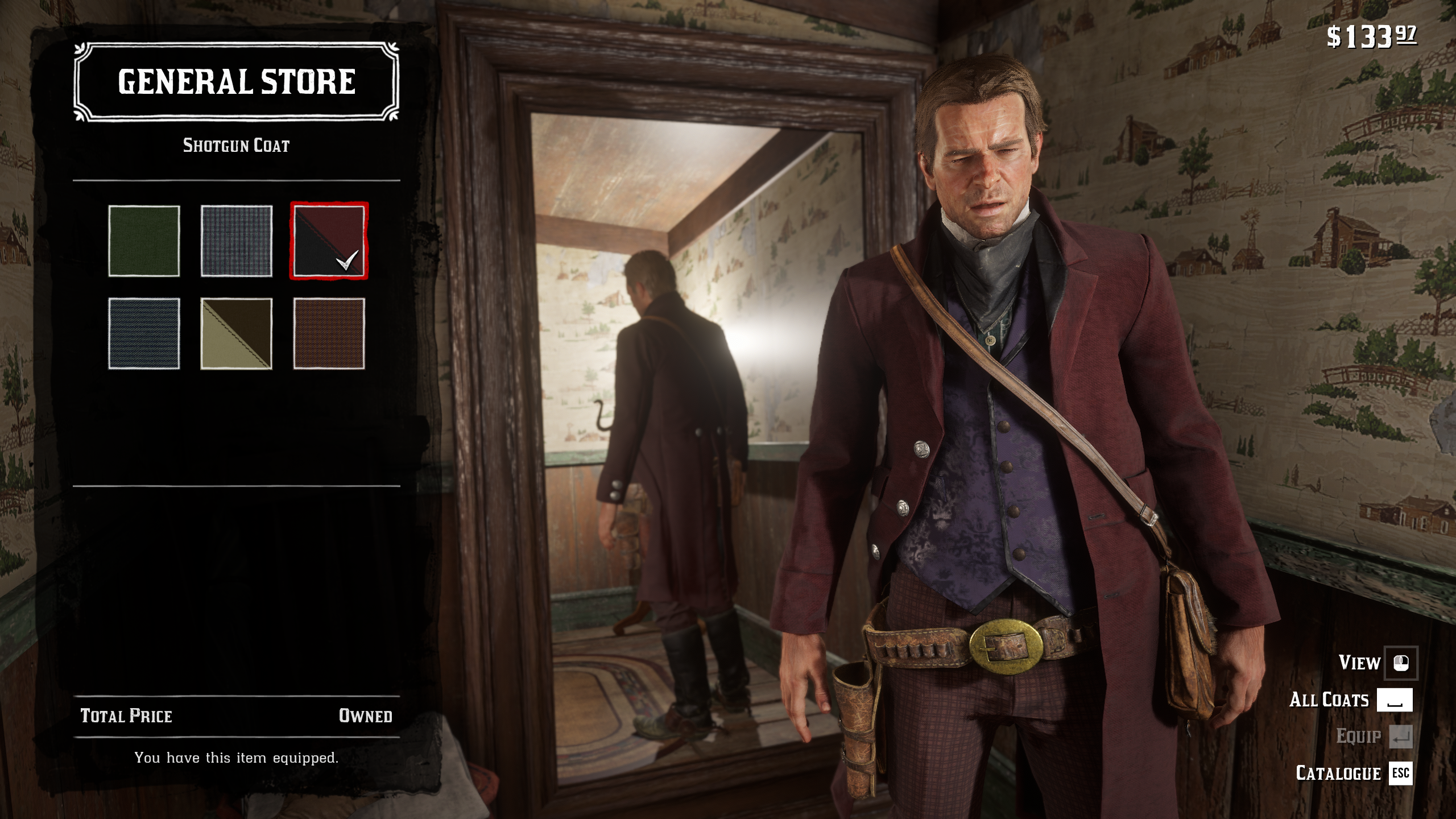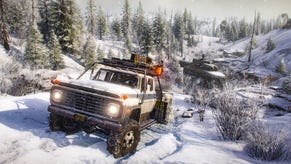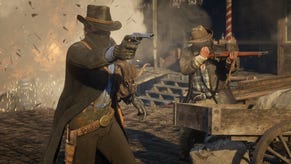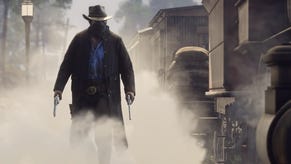Wot I Think: Red Dead Redemption 2
How the west was fun
Reviewing Red Dead Redemption 2 a year after its console release is like happening upon a frontier homestead after it's been attacked by bandits. It’s a game that has been subjected to every take under the sun, and stripped to the bone by internet vultures; every last secret dug up, every mechanic scalped and scrutinised, until no magic remains. I, adopting the role of world-weary sheriff, look upon this crime scene and mutter under my breath, “what in tarnation happened here?” A deputy pipes up: “SEO, boss. F**kin’ SEO.” (My inner dialogue is written, of course, by David 'Deadwood' Milch.)
I myself arrive at the PC version with 80 hours of Xbox One grit in my boots, but this won't be the case for everyone. I mean, the idea of making it a year without having RDR2 thoroughly spoiled seems impossible - but it must apply to someone. What surprises me, with this PC release, is just how much a lick of paint can re-imbue such well-trodden ground with a refreshed sense of wonder. And if you did make it here all innocent and unspoiled, you are in for the definitive version of the definitive Rockstar game, warts and all. So let’s pretend we haven’t already waded through the swamp that is The RDR2 Discourse, if only for the length of time it takes me to tell you wot I think.
As mentioned already, this is not my first rodeo. I’ve played every quest, executed a Planet Zoo’s worth of legendary animals, and eaten an ungodly amount of tinned peaches. The latter has no bearing on my completion percentage, but I just love doing it, if only to remind myself that someone had to mo-cap scarfing down a can of Del Monte. I drew the line at the needle-in-a-haystack drudgery of hunting for Native American dreamcatchers in a virtual wilderness as big as any I’ve explored. I don't hate myself that much. And besides, after some of the heinous stuff I’ve done in RDR2, it would be unwise to smash anything that might keep away the nightmares.
The year is 1899. Rock Paper Shotgun is celebrating its 26th anniversary, but for Arthur Morgan and the other members of Dutch van der Linde’s gang, things are less peachy. Well, technically, they’re very peachy. As I've already implied, tinned fruit is virtually bulging from the cupboards of fin de siècle America (and on that note, RDR2’s obsession with interactive sideboards makes it feel like Shenmue in a Stetson). But alas, Dutch’s gang is cottoning on to the fact it’ll take more than dessert to keep them alive. A job gone wrong has driven the group into exile, where they're dreaming hungrily of the one big score that could put all their troubles behind them. So begins a whole lot of riding to dots on the map and shooting everything there.
But what rides! And what dots! And what shooting! I often feel like Rockstar’s designers use mission travel to show off their favourite routes: paths that creep you down thin canyons before slapping you in the face with a vista at the end, or rolling plains that look amazing with seven bandits riding in a spread formation across them. Start layering on weather, and even simple A-to-B chat becomes a technical showcase, with characters raising their voices as blizzards separate them, or hushing their banter as rain masks a stealthy approach. And for once, missions know when to shut up, too, with longer rides across the map cut mercifully short with cinematic interludes.
Missions see Rockstar continue their strange habit of building vast playgrounds and then temporarily penning you in with stern objectives in the name of cinematic storytelling. There’s no room for interpretation or improvisation in this parade of bank robberies, assassinations, jailbreaks and double crosses. It’s not a criticism, as such; while the shadowy hand of the director is always there, there’s at least a clarity to objectives that you didn’t always get in Rockstar's previous games. Rarely did I find myself accidentally leaving my required stage position and failing. And the benefit of maintaining that puppeteer's grip is that they can orchestrate action of an intensity rarely seen in open world games.
The result is a lot more missions that match the drama of GTAV’s standout heists: beautifully paced setpieces that thrum with nervous energy as you saunter past oblivious NPCs, and then segue through explosive violence into chaotic getaways. There’s an especially good stint in Saint Denis - New Orleans by another name, and the map’s most populated city - where winding streets and teeming people completely change the energy of the tasks at hand. Graduating from podunk towns and plantations to a place with this many witnesses, and so few avenues of escape, helps gives this substantial act a distinct flavour, something Rockstar have struggled to conjure in the past.
And when it does all go wrong for Arthur, out come those marvelous weapons. I’m no gun nut, but I love the way RDR2’s arsenal balances the severe and the sluggish: there's real heft and power in the way lead thumps enemies to the ground, but at the same time, chamber limitations demand deliberation. These are weapons that ask you to hold your nerve as you line up a shot, and in doing so turn you into Lee Van Cleef, methodically unbuckling his rifle from his horse as his doomed target gallops off in For A Few Dollars More. (Arthur also unpacks his on-foot loadout from his horse, which, while cumbersome, shows off some near-pornographic holstering animations). It’s combat that makes a role-player of me: the show-off who favours his ivory handled revolver over something more heavy duty, just because it’s cooler.
And as much as RDR2’s story wrings its hands about the toll that violence exacts on a person’s soul, it’s also a game that delights in heads evaporating at the end of a shotgun. I’m not going to lie: a lot of this stuff still speaks to my inner 13-year-old. There’s some staggering gore modelling. We’re talking bullet holes accurately mapped to bodies, spurting red stuff like an overenthusiastically squeezed ketchup bottle. It’s gnarly! But it also has the slapstick unpredictability of the Euphoria engine, which sends ragdoll corpses tumbling down stairs like Jackie Chan, or knocks them from the saddle where, with one foot still hooked in the stirrup, they're dragged across the prairie by their bolting steed. And though RDR2 is never a hard game, when you do bite the bullet, the spontaneity of the gunfights makes them easy and enjoyable to replay.
As much as I love the cause-and-effect of RDR2’s combat, however, I fully acknowledge the limitations that turn others off. There’s really no escalation to gunplay. From start to finish there’s one enemy type - human (and the odd attacking carnivore) - and each of those is killed with a shot to the head. This in turn leads to a dependence on the slow motion ‘dead eye’ mode, which lets you drag combat to a crawl, and calmly put six rounds through six skulls. Factor in the generosity with which the game hands over items that replenish dead eye, and there’s rarely a moment you don’t have it as a crutch. As fights get bigger, it’s very easy to fall into a cycle of slow-mo, shoot, chew tobacco, slow-mo, shoot, chew tobacco; and yes, in this light, gunfights can bleed together. It’s definitely more evident if you mainline the story, where the majority of the combat resides.
It’s in combat that you feel one of the clearer benefits of RDR2’s trip to PC. Mouse aiming is an obvious boon to any sharpshooter - aim assist does a lot of heavy lifting with default controller settings - and it's especially pleasing in dead eye mode, where you ‘paint’ targets onto slow-mo body parts before rattling out shots in real-time. The flipside to this is that it takes longer to learn the key bindings. RDR2 is already a mess of context sensitive actions on controller (mapping ‘talk’ and ‘aim gun’ to the same trigger was... a bold move) and the spread of keys takes even more getting used to. Oh, and definitely switch the horse camera to ‘horse relative’, to free its directional steering from your mouse aim - failing to do so is a recipe for a crumpled horseflesh disaster if ever there was one.
The bigger PC revelation is the improvement to first-person perspective, which, thanks to the mouse and a slicker frame rate, now handles like a viable FPS. On console you almost had to drag your in-head view around the screen, such was the sludginess of Arthur’s turning circle. It felt like playing through a GoPro attached to a third-person avatar. Some of that disconnect between body and eyes still exists - when climbing rocks or riding a horse, I felt like a baby being heaved around by a parent - but for on-foot exploration and gunfights, it's an amazing showcase for PC’s improved textures and Rockstar’s ludicrous attention to detail. I still think the grandeur of the landscape is better appreciated in third-person, but I’ve spent way more of my replay in first person than I expected to.
The individual strengths of first- and third-person camera modes speak to the specific magic of RDR2’s visuals; few games impress like this on both a micro and macro level. In your immediate vicinity you have a world teeming with life: the density and diversity of flora and fauna, the reactive surfaces (shoot someone in mud, and the way the body sinks into the goop is extraordinary), the minute detail of period set dressing. Christ, the fact you can go into a shop and freely manhandle individual items on the shelves makes it more interactive than some shops I’ve been to in real life (and reinforces my ‘Shenmue in a Stetson’ take). But take a step back and you’re in the landscape: that pristine, untouched wilderness, basking in sunlight, whipped by storms and vanishing into the most realistic fog ever committed to pixels.
Of course, this was true of the console version, too. What PC brings to the mix is a sense of completeness, filling in what few gaps did exist - and some I didn’t realise existed until now. Much of it is down to draw distance: the sense that the grass blankets the world, rather than being magicked under your feet, or the sight of bushes and cacti dotting the horizon, giving clifftop vistas even more majesty. To be honest, no single visual setting jumps out as having a game-changing effect, although I did have to dial down volumetric lighting and temporal anti-aliasing to get the game to a stable 60 frames at 1440p on an RTX 2080. But even with those on, we’re talking granular improvements over what was already a stunning showcase (at least on Xbox One X, where I played it).
Far more important is that jump in frame rate, which more than justifies the settings that have to be sacrificed to reach it. (Katharine offers far better analysis of this than I ever could, but to my eyes, the game dazzles at a mix of medium and high settings, so don’t feel put out if ultra is beyond your card). At 60 frames, RDR2 just feels more alive, capturing the breezy sway of nature, or the play of the light as it cracks through treetops. Does it reinvent the game for those who’ve played it before? Probably not. But it lets you revel in the fidelity of the world Rockstar built, from cutscenes where entire character histories are caught in a facial expression, right down to the lowliest NPC farmer performing more bespoke animations than can be found in standalone farming games. I’m amazed at how taken I am with it all the second time around.
It’s also worth pointing out here that the launch has been mired with technical issues, from the Rockstar Game Launcher crashing, to frequent in-game crashes. I didn’t encounter this myself, but I know that Katharine has yet to get the game to work on her PC. Buying on the Epic Game Store still pushes you through the Rockstar launcher, too, so don’t expect that easy workaround. It’s a disappointing state of affairs, and I hope the kinks get ironed out in time for the later Steam release.
Coming to RDR2 with a love of world-watching is important as, for me at least, this was the more interesting part of the game. RDR2 is a game of two distinct halves: the cinematic story you have little control over, and the sandbox where you rob trains and then spend your haul on hot baths and nice hats, because you’re a gentleman thief, dammit. These two sides are constantly butting together. All the while the game's story of spiralling despair and tension is working hard to sell you on how dire your situation is, it has to contend with the fact that you can piss off and go herb collecting for five hours. This is more keenly felt in the final third of the game, where Arthur’s character arc takes an urgent new direction, but the game still has to accommodate my desire to catch a legendary trout. None of this is ruinous, and it's common to many open world adventures, but it leads to a sense of a game at odds with itself.
Weirdly, however, it does manage to hit a sweet spot on this front, for a while at least. Just a few hours in, where you’re learning the ropes, there's genuine time for leisure built into the narrative, and time spent away from camp feels like less of an affront to the drive of the story. It’s here that the world opens up and its many activities make themselves known: hunting, fishing, gambling, robbery, treasure hunting, horse wrangling, and about nine million more cowboy hobbies. Most of them are given the depth of a standalone game, with the potential to eat up tens of hours of game time apiece. Some can be enjoyed with fellow gang members as optional activities, too, filling out the backstories of the cast and investing you in lives that can be cut shockingly short. Race through the main campaign and you won't just miss out on a lot of colour: when the bodies start to pile up, it’ll mean much less.
These early hours are also the only time where the game's economy functions. You’re suddenly faced with stores selling fancy duds and shiny guns, but you have no money with which to buy them. It’s here that you feel the tingle of your criminal impulses - you can just rob and steal your way to riches, right? Sure, but you have to balance the urge to violence against the growing bounties on your head - and the bounty hunters that come with them - which you’re still too poor to pay off. It makes for some fine dilemmas.
Once you progress further in the story, however, you're earning so much dosh from mission rewards that you can shrug off bounties, and the entire law and order system of the game fizzles out. It’s a great shame, as some of my favourite RDR2 moments came from my desire to dress myself as a dapper, Cy Tolliver-esque bastard, and the atrocious, equally Cy Tolliver-esque things I did in order to afford to do so. Like I said: no dreamcatcher destruction for me.
One of the pleasures of revisiting the game on PC, then, is rediscovering that wonderful early game, and those 30 or so lighthearted hours before things got bleak for Dutch and co. It feels closer to being a role-playing game than previous Rockstar sandboxes, despite repeating many of their tricks. Stranger side missions or randomly spawned events that pull you in to short narratives feel more organic in the countryside than they ever did in Los Santos. Weirdly, the more direct nods to RPGs - crafting, or levelling up your ‘core’ stats - don’t really factor into my thinking; they’re quite fussy attempts at adding depth, and can be easily ignored. This is role-playing in the sense of dress up and make believe; a trip to Westworld, just without Ed Harris being an asshole and spoiling your fun.
And if you do want to play with the Ed Harrises of the world, Red Dead Online beckons. This is a potential solution to that freedom/story tension outlined above, as it repurposes RDR2’s world for a far more freeform experience. Yes, it has the story framing seen in GTA Online, and meatier co-op tasks that draw strangers into a mini posse, but it’s also a much more fitting setting for bumping into strangers (up to 32 on one map) and making your own fun. Or, based on my limited time with it, getting lassoed, hogtied, and shotgunned in the head. I particularly like the way it treats side activities as asymmetric events. For example, the wagon you’re protecting from AI bandits might also become a target for other human players, or you might discover bounty targets being protected by human bodyguards. It’s a fun way of bringing surprises, and a bit of emergent storytelling, into freeform activities.
Of course, only time will tell if it grows into the same behemoth as GTA Online. Still, it stands the best chance of doing so on PC, where GTA clearly flourished. I’d love to see the same role-playing servers emerge here that emerged there; I’m just a lot more interested in stories to be told in this world than grimy Los Santos. Expect much more multiplayer noodling on Rock Paper Shotgun in the weeks to come.
So, Red Dead Redemption 2, then. Mostly good, sometimes bad, never ugly. A prequel to a story that never made it to PC and which, honestly, makes me jealous of people coming to it for the first time. But even as someone who has spent a huge amount of time in this world, it’s a trip I’m more than happy to be taking again. A staggering technical achievement; a deliciously gooey shooter; the most accurate mud simulator outside of actual mud; a great advert for the healing power of peaches. However you approach Red Dead Redemption 2, there’s something to impress here. And on PC, it's at its most impressive.


